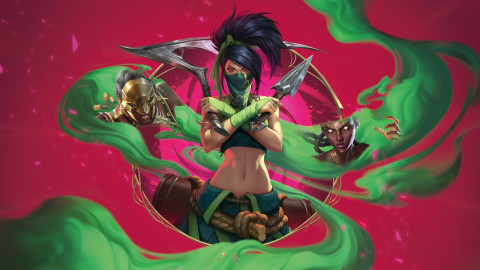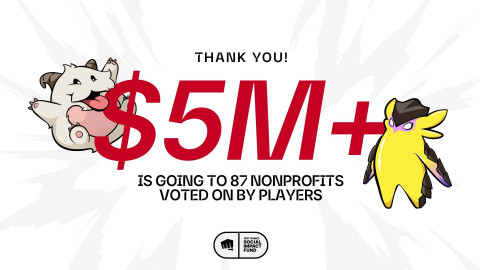
Towards the end of the year, the lists come out. What were the best songs of the year? Which sports moment defined the past twelve months? Which was the best game released? But 2019 offered something far more unique to follow: an explosive birth of a new game genre.
On January 4th, a new game mode was added to Dota 2’s Arcade section: Dota Auto Chess. After months of programming and fixing bugs, Chinese developer Drodo Studio, at the time comprised of just a handful of people, was finally ready to share their latest creation with the world.
The premise of Dota Auto Chess was fairly simple. It revamped an old Warcraft 3 mod, Pokémon Defense, which technically was the first autobattler game, but one that never quite took off. Out went the Pokémon, and in came the Dota characters in a visually vastly more appealing setting. Eight players each were assigned their little island. Through a semi-randomized shop—you share the unit pool with all other players—everyone builds their own army of Dota characters, tied by assigned synergies and abilities. If you get three copies of the same unit, they combine to an upgraded version of said unit. From three 1-stars to a 2-star, and from three 2-stars to a mighty 3-star.
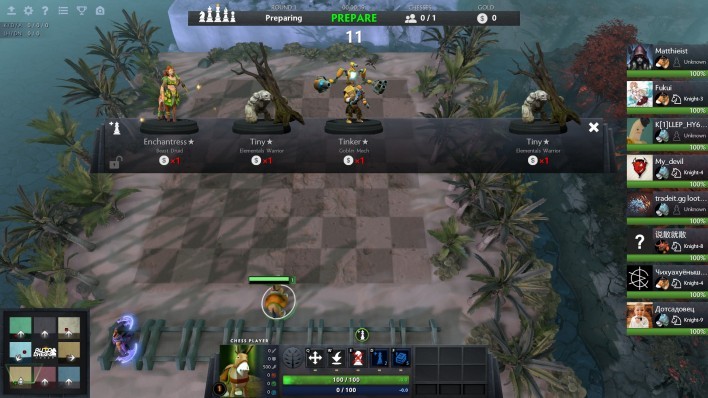
Drodo’s recipe was one for success. The strategic elements blended perfectly with the slot-machine feeling the unit shop provided, letting players experience tense moments when they were on the edge of elimination, and moments of ecstasy when the strategy clicked and cruised to victory.
Card game players, Dota players and lovers of strategy games all flocked towards the mod. A month and a half after Dota Auto Chess was released, it already had been downloaded by four million people. Eleven days later it crossed five million players. The continuous updates kept the game fresh, and though the ranking and matchmaking system had serious flaws, the community grew rapidly and steadily. Valve supported the mod in various ways, including dedicating servers to Auto Chess specifically.
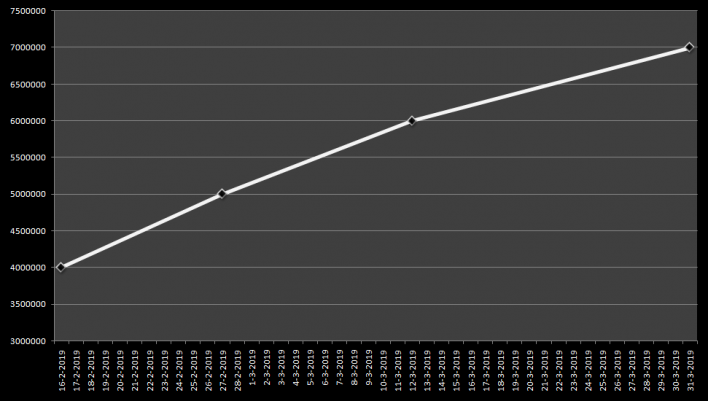
By the end of March 2019, closing in on three months since it was released, Dota Auto Chess had been downloaded over seven million times. Drodo Studio had partnered with mobile games studio Dragonest to develop a mobile, non-Dota port. But fans were waiting for the big studios to enter the scene. Given Auto Chess’ numbers it wasn’t a question of if, but rather when that would happen.
Valve was the first publisher to confirm that they were working on a standalone game, on May 21st. The company known for turning community-created game modes into successful games decided to pick up another game that had risen right under their own noses, and developed it for PC as well as for mobile. But competition followed soon. On June 10th Riot Games revealed their autobattler project: Teamfight Tactics. Though it would be a game mode in the League of Legends client, many regarded—and still regard—it as the legendary second game Riot Games would eventually have to produce.
The two studios with the biggest MOBAs on the planet had entered a new standoff: who could offer a polished autobattler first? Originally, Valve hadn’t announced a date on which players could get their hands on their autobattler project, Dota Underlords. But Riot Games’ original announcement stated that Teamfight Tactics would be playable on the 25th of June, and Valve moved quickly. On June 13th, Dota Underlords was made available to those in possession of the Dota 2 Battle Pass.
Both Dota Underlords and Teamfight Tactics deviated from Auto Chess on details. Dota Underlords stuck to the same board and combat mechanics, but implemented its own itemization system and removed the courier—a customizable unit the player could control to pick up items and wander around the board. Teamfight Tactics kept an itemization system similar to that of Dota Auto Chess and chose to keep an equivalent of the courier as well, but exchanged an 8x8, square board for a 7x6 board with hexagonal tiles to place units on. Additionally, Teamfight Tactics let players fight directly against each other, whereas Dota Auto Chess and Dota Underlords both sent copies of a player’s army to an opponent in the combat phase.

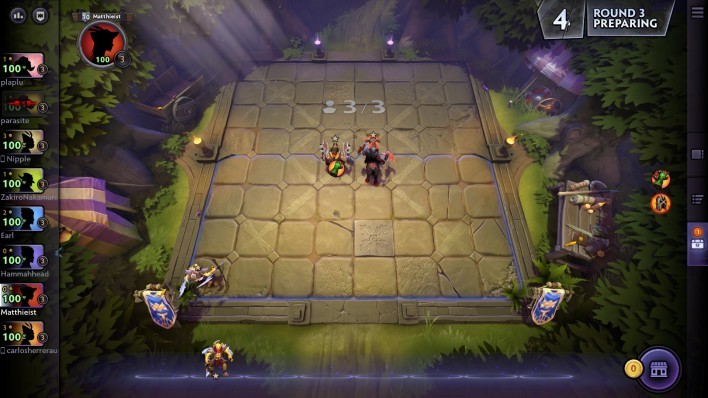
Both games had their issues at launch, aside from their early stage bugs. Common criticism PC players gave Dota Underlords was that it felt like a mobile game, ported to a PC client, while the game length simply was too long to be considered a mobile game. Riot had trouble balancing the item system, and at first original Auto Chess players weren’t too excited to relearn synergies, items and the positioning that came with a new map layout.
Over the months that followed, both Valve and Riot ironed out the creases. A third autobattler competitor was introduced in November, at BlizzCon. Blizzard had managed to bring an autobattler format to Hearthstone, their digital card game, and called it Hearthstone Battlegrounds. The very basics of the autobattler formula were kept intact: eight players each build their army, and play in 1v1s to decide who is crowned king. But the combat system and positioning differed wildly, and stayed close to how a regular game of Hearthstone transpires.

Three giant studios with their cards on the table. In the West, Dota Auto Chess and its Dragonest spin-off, called just ‘Auto Chess’, have been almost completely forgotten about, it seems. But to this day, even though Auto Chess has a mobile and PC version, Drodo Studio still updates the original Dota Auto Chess regularly.
After such an explosive start to the new genre, what’s the scene looking like now? Well, quite a bit more bleak than you’d probably expect. The mod, Dota Auto Chess, sits at around 9.6 million downloads, but that number hasn’t changed much for months. Auto Chess, the Dragonest product, can only be played from the Epic Games store, which doesn’t provide player numbers. As for the mobile version: the Google Play store says the game has been downloaded over five million times, and holds an average 4.1 out of 5. Not much to judge by.
To get at least some perspective on the game’s popularity, Twitch viewership can be taken into account. It’s a flawed tool to use—especially in Auto Chess’ case, since it’s catering to an Asian audience, and those communities generally use different streaming platforms—but it’s at least an indication of a portion of the market.

Auto Chess received its own Twitch category on the 17th of March, when Dota Auto Chess was still the one and only player in the field. And, according to the statistics above from TwitchTracker, it did well for a few months. However, as soon as Dota Underlords and Teamfight Tactics joined the field in June, viewership plummeted drastically.
Dota Underlords itself isn’t sailing a much better course. Thankfully Steam is far more transparent with player numbers. SteamDB, a site that tracks all games’ player numbers on a regular basis, provides a table of Dota Underlords’ player numbers, and the game’s Twitch viewership:

Three days after Dota Underlords entered Open Beta, the game reached its peak concurrent players at an impressive two hundred thousand players. But the fall afterwards is steep. Dota Underlords hasn’t managed to build off the hype Dota Auto Chess built at all—it seems to have turned people away from the autobattler genre. 16,000 concurrent players for a free to play game, available on PC and mobile, a spin-off of one of the most successful MOBAs out there and a direct adaptation of a promising mod, is disappointing.
There isn’t much public info about Hearthstone Battlegrounds’ active player numbers, or of viewer interest. Unlike Auto Chess, Dota Underlords and Teamfight Tactics, it doesn’t have its own Twitch category. It seems that, so far, Battlegrounds has done a great job entertaining Hearthstone players, and bringing back people who once played the game. The mode is updated quite frequently, and offers a great alternative to the Standard, Wild and Arena modes.
Riot Games isn’t transparent about their player numbers either. Back in September, two months after Teamfight Tactics went live, they let the world know that it had 33 million monthly active players, and showed a graph where it could be seen that TFT boasted ‘hours played’ stability, much like League’s ARAM mode. However, that’s over three months ago. If we want an indication of the mode’s current popularity, we once more need to take a look at Twitch viewership.

The drop is steep for Teamfight Tactics too. Yes, the game mode has about as many viewers as Dota Underlords has players, on average. But considering that League of Legends is estimated to have over a hundred million monthly active players, and Dota 2's estimated monthly active players sat at 11.9 million at the start of this year, the gap is pretty small. Nevertheless, when looking at Twitch viewership and overall popularity, it has to be said that Teamfight Tactics is the market leader. Albeit in a market that’s losing its grip on the consumer.
It’s quite an anticlimactic conclusion to what started as a thrilling year for video games. New genres can break the world open, and infuse the industry with new energy. But as of now, it doesn’t seem like autobattlers will be much of a break. Is it over? Not at all. No doubt that more, famous studios are still working on their own autobattler, convinced that they have found all the secret ingredients.
But the fight isn’t even over for the existing autobattlers yet. Sure, Auto Chess itself probably won’t recover from this. Valve couldn’t turn Artifact’s failure into a success, but seems to be approaching Dota Underlords’ process in a vastly different manner. They’re going to need a lot to turn this ship around, but it’s not impossible—the game runs smoothly, and in many ways is already a fully built game.
Current autobattler king Teamfight Tactics hasn’t reached its final form either. Riot Games has announced it would be creating a mobile version, and hopes to launch it before the end of May 2020. Though there’s not much of an esports scene for TFT at the moment, it’s something Riot is committed to as well, with plans for a competitive scene to be revealed early 2020.
2019 came with an explosive high for the autobattler genre, sending ripples across the video gaming world. The world has stabilized though, and autobattlers are falling behind. 2020 needs to be the year it grabs back the attention of the public, or it will enter a state of slumber. And hoping that, in nine years, someone will revive the genre for a third time through some mod, seems a bit risky.
Header image original by Michael Larson
-

Storyteller by heart. If something is competitive, I am interested in it.
Sort by:
Comments :0


